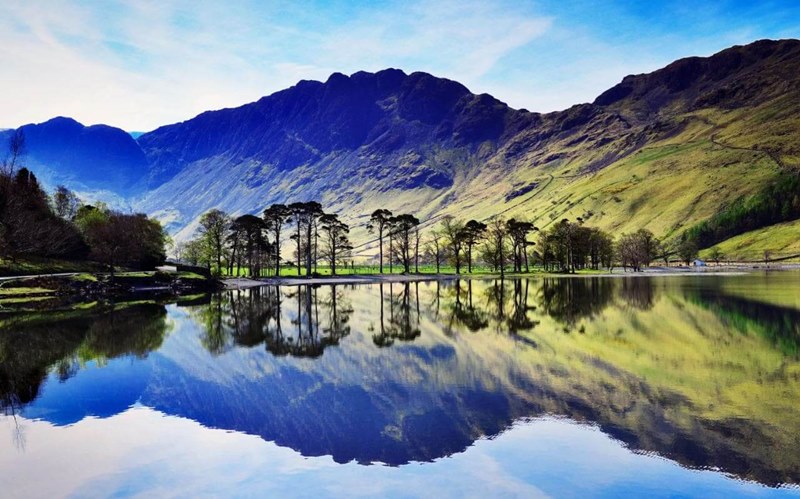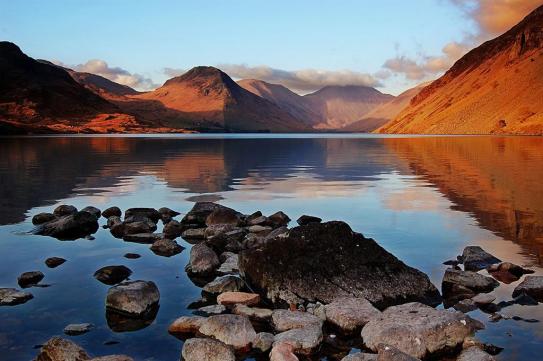The Lake District National Park
Lake Vast Water
The Lake District National Park or the Lake District is a national park in England. This territory was declared a nature reserve in 1951 in order to preserve all the beauty of the nature of the region for future generations.
The Lake District is famous for its picturesque mountain and lake landscapes. Here begins the Cheviot Hills, which serve as a natural geographical border with Scotland. Steep mountains, low green valleys, mysterious lakes have inspired many poets and artists, including Wordsworth and Beatrice Potter who lived here (see lake school).

The Lake District is the most visited of all 14 UK national parks. The entire area of the park is located entirely in the mountainous region of Cumbria, at an altitude of more than 3000 feet (~ 900 meters) above sea level, this area is the highest in England. Also on the territory of the reserve is Scafell Pike, which is the highest point in England.
Geography
General geography
The Lake District is 55 km wide. The territory of the park was formed as a result of glaciation, which ended 15 thousand years ago. The park includes, formed as a result of the impact of glaciers, wide U-shaped valleys, in most of which today there are many lakes, it was their abundance that gave the name to the park. In the most elevated areas there are tarns. The higher mountains are rocky, the lower hills are moorland covered with ferns and heather. Below is a wooded area where ancient oaks side by side with pines. Most of the area is occupied by swamps, which is a consequence of frequent rains. The total area of the park is 2292 sq. km.
At the end of the 18th century, the Lake District became popular with tourists. This is partly the result of wars in continental Europe, reducing the ability to travel there. In 1778, Father Thomas West produced a Guide to the Lakes, marking the beginning of the modern era of tourism for the area.
The western part of the Lake District has many viewing platforms (“stations”) – they were created here a long time ago and are of great aesthetic value. In several places, buildings were erected here that appeared here back in those days to encourage tourists. Parts of the Kleive station once built here can still be seen today.
The English poet William Wordsworth, who published his Guide to the Lakes in 1810, published 5 editions of this book before 1835. Wordsworth called Dunnerdale, or Duddon Valley, in the southwest of the Lake District, his favorite place.

Railways lead to further expansion of tourism. The Kendal and Windermere Railroad was the first railroad to penetrate deep into the Lake District, reaching the town of Kendal in 1846 and Windermere in 1847. During these years, the railway network expands, and they reach several more towns in the Lake District. The railways built here can significantly increase the flow of tourists, which makes a great contribution to the development of the tourism industry in the region. Railroads are built here in addition to the steamship transport that exists on many lakes.
The growth of tourism continues with the advent of automobiles. At this time, there is a decrease in the role of railways in the life of the region. The formation of the National Park in 1951 from the excessive development of commercial activities in the region in order to preserve nature in its original form. The main highway leading here is the M6, which is located in the eastern part of the park. Narrow roads are a big problem here; since the 1960s, the central sections have been very busy. As roads and railroads provide easier access to the park, the Illustrated Guide to the Hilly Land of the Lakes is emerging. The first edition appears in the 1950s and describes the park’s 214 peaks, with very well illustrated panoramas and route maps, as well as stories and digressions. The guide was widely used by tourists. Later, this guide was edited by Chris Jesty, who took into account all the changes in tourist routes that have occurred recently.
